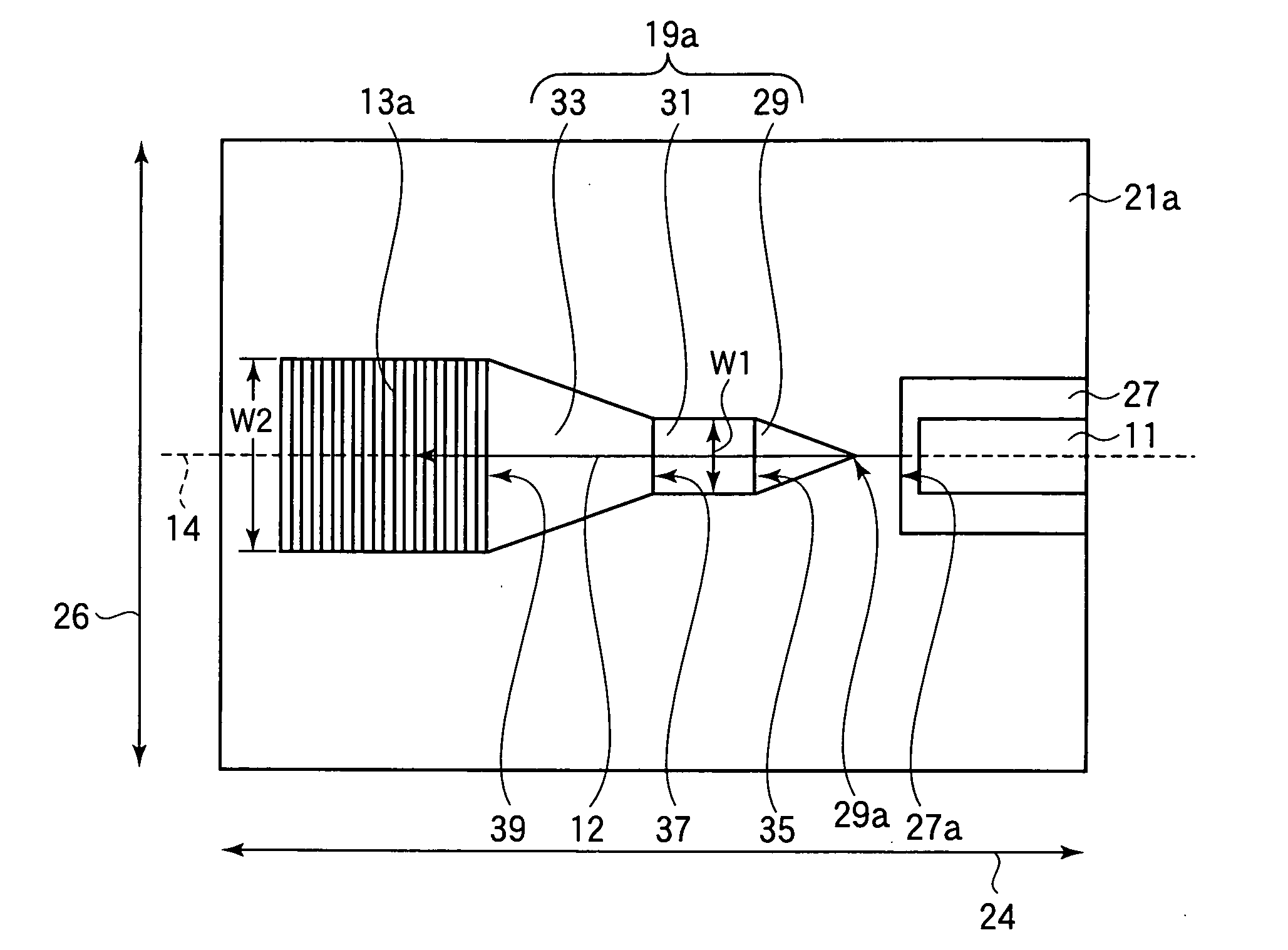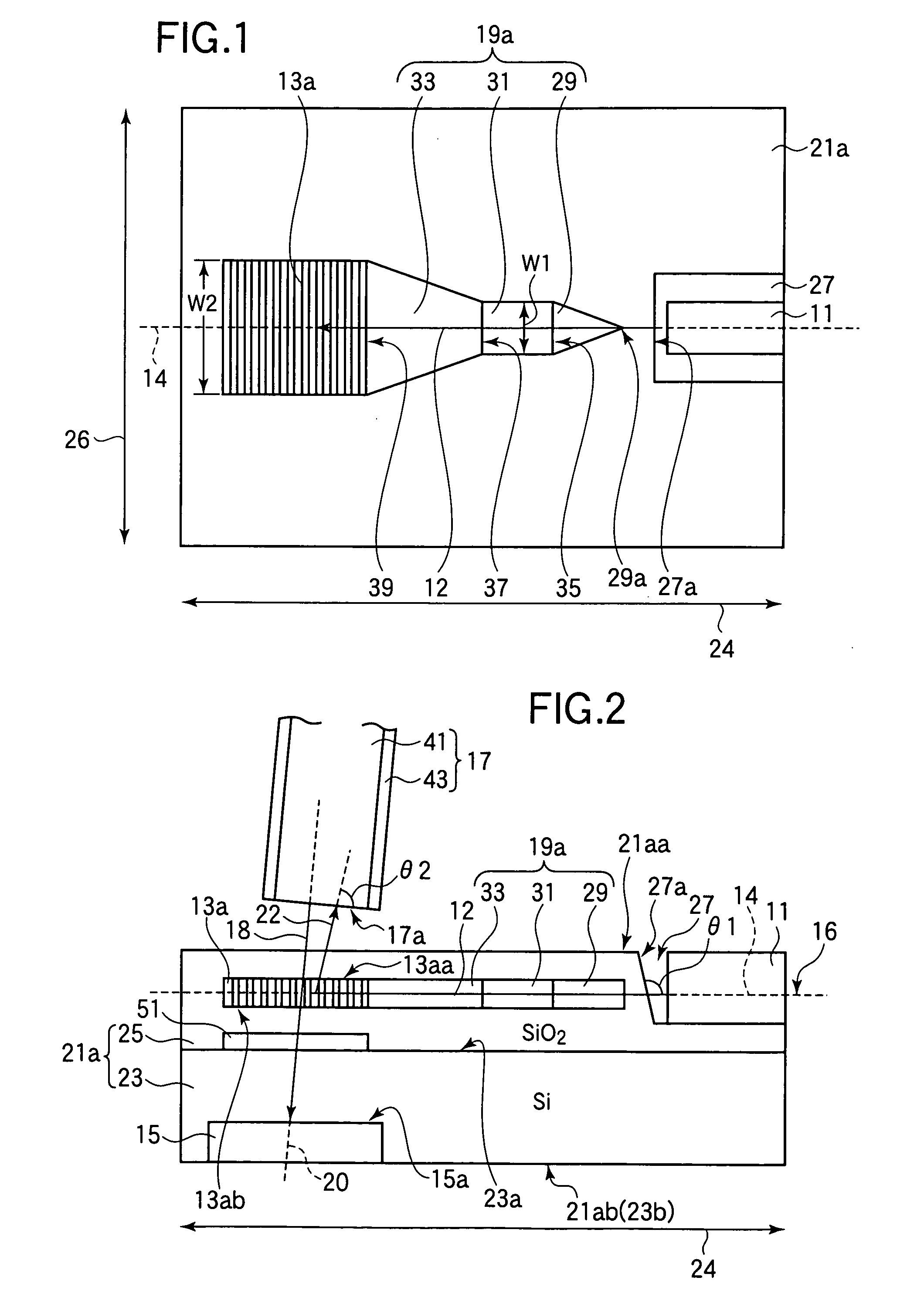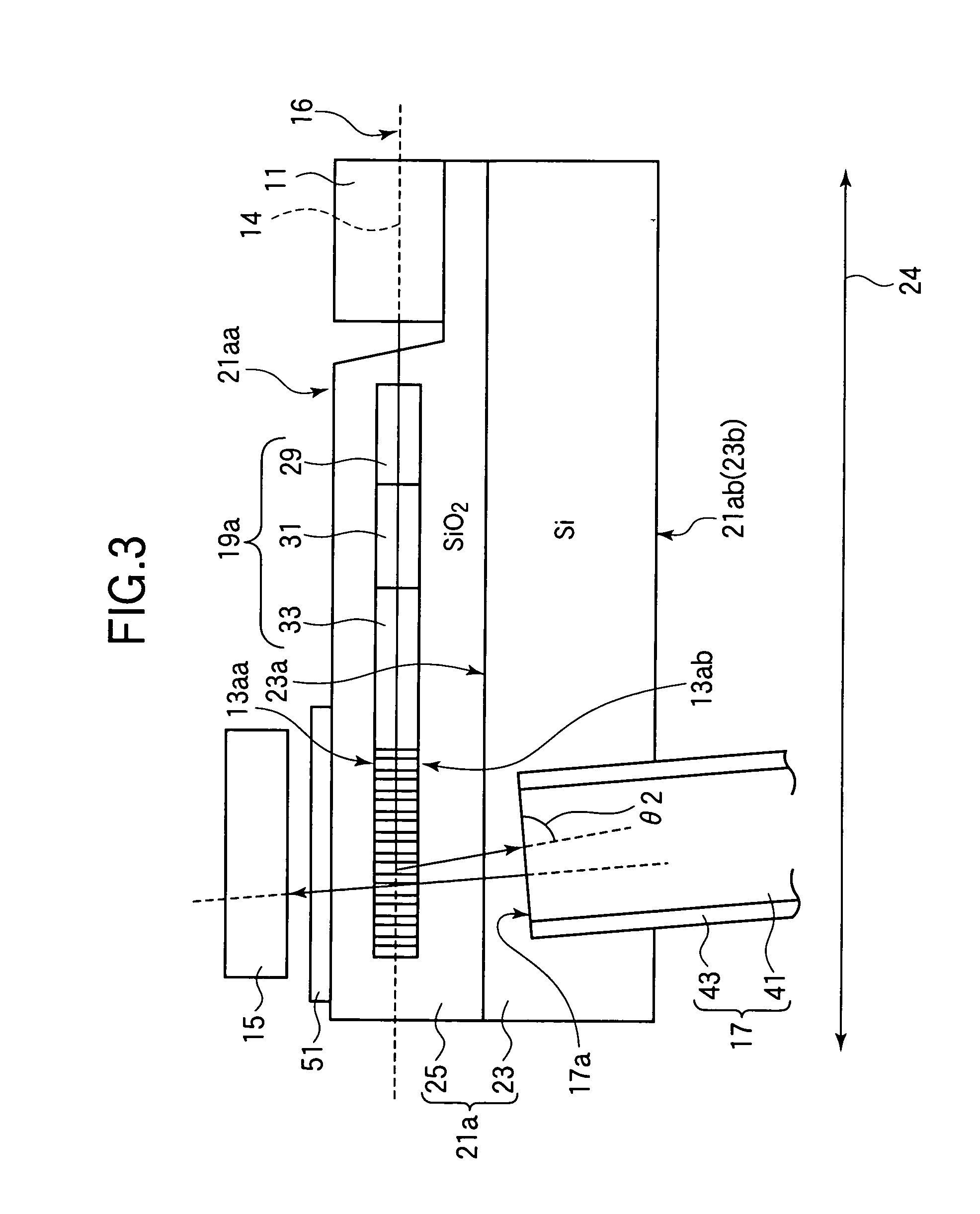Optical Transceiver module
a transceiver module and optical technology, applied in the field of optical transceivers, can solve the problems of occupying space for optical components and disadvantages of axial alignmen
- Summary
- Abstract
- Description
- Claims
- Application Information
AI Technical Summary
Benefits of technology
Problems solved by technology
Method used
Image
Examples
first embodiment
[0024]Referring to FIG. 1, the optical transceiver module in the first embodiment has a semiconductor laser 11, a grating coupler 13a, and an optical waveguide 19a, which are formed in or mounted on a substrate 21a with a longitudinal direction or first optical axis direction 24 and a width direction 26.
[0025]The semiconductor laser 11 functions as the transmitter in the optical transceiver module by generating outgoing light, referred to below as the upstream optical signal 12. The wavelength of the upstream optical signal 12 is, for example, about 1.31 micrometers (1.31 μm). The semiconductor laser 11 is mounted in a recess 27 in the substrate 21a.
[0026]The grating coupler 13a is a rectangular plane waveguide with a series of grooves that diffract the upstream optical signal 12.
[0027]The optical waveguide 19a extends from the grating coupler 13a toward the semiconductor laser 11 along a first optical axis 14, forming a path that guides the upstream optical signal 12 from the semi...
second embodiment
[0053]An optical transceiver module according to a second embodiment will be described with reference to FIGS. 6 and 7.
[0054]The optical transceiver module in the second embodiment differs from the optical transceiver module in the first embodiment mainly in that the semiconductor laser is integrated with the optical waveguide and grating coupler to reduce the length of the optical transceiver module. The other transceiver components and their functions are the same as in the first embodiment; repeated descriptions will be omitted.
[0055]This optical transceiver module is also used to transmit optical signals to and receive optical signals from an external optical system (optical fiber) 17.
[0056]Referring to FIG. 6, the optical transceiver module in the second embodiment has a grating coupler 13b similar to the grating coupler 13a in the first embodiment and an optical waveguide 57, aligned in the first optical axis direction 24 of a base 21b. The optical transceiver module in the se...
PUM
 Login to View More
Login to View More Abstract
Description
Claims
Application Information
 Login to View More
Login to View More - R&D
- Intellectual Property
- Life Sciences
- Materials
- Tech Scout
- Unparalleled Data Quality
- Higher Quality Content
- 60% Fewer Hallucinations
Browse by: Latest US Patents, China's latest patents, Technical Efficacy Thesaurus, Application Domain, Technology Topic, Popular Technical Reports.
© 2025 PatSnap. All rights reserved.Legal|Privacy policy|Modern Slavery Act Transparency Statement|Sitemap|About US| Contact US: help@patsnap.com



